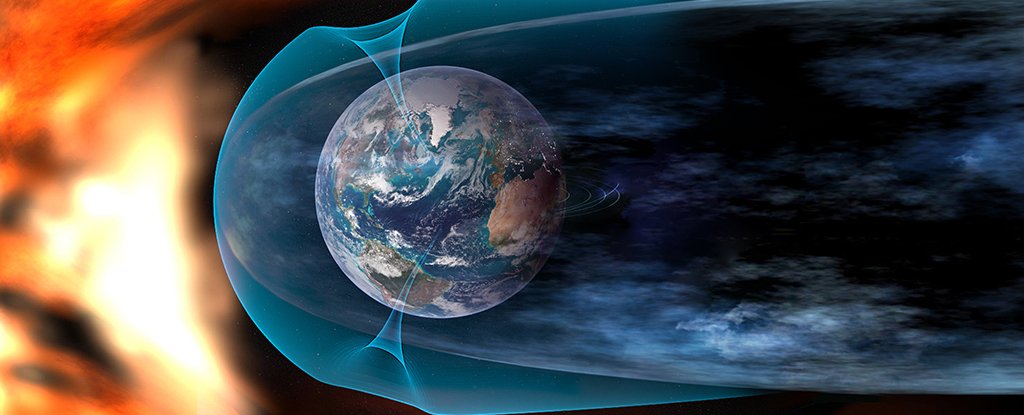
Evidence of water in the shadows of craters or enclosed in glass beads like microscopic snow globes has recently revealed that the Moon’s surface is much less dehydrated than we ever imagined.
Exactly where this layer of ice water came from is a mystery that astronomers are currently trying to solve. A surprising possibility that appears is an elementary rain from our own atmosphere, delivered by the Earth’s magnetic field.
Water is not exactly a rare substance in space. Given the right places to hide, it can sneak inside asteroids, cover comets and even cling precariously to the darkness of Mercury’s craters.
It makes sense, at least part of it will splash on the moon from time to time. But due to the scorching heat of the Sun and the lack of protection against the vacuum of space, it is not expected to last very long.
To explain the surprising amount of moisture found on the lunar surface, the researchers proposed a more dynamic form of production – a constant “rain” of protons driven by the solar wind. These hydrogen ions turn into mineral oxides in the moon’s dust and rocks, breaking chemical bonds and forming a free and temporary alliance with oxygen.
It is a solid hypothesis, one that would be driven by the observations of more exposed (and weakly linked) water molecules that give way quickly in the vacuum of space whenever the Moon is protected from the solar wind.
Our own planet happens to be quite well protected from the constant breeze of ions blown by the Sun, due to a bubble of magnetism that surrounds it. This force field not only surrounds us, but is blown in a form of tears by the solar attack.
For several days each month, the Moon passes through this magnetosphere, receiving a brief respite from the Sun’s proton rain.
An international team of researchers recently used plasma and magnetic field instruments in the Japanese Kaguya orbiter to identify this precise synchronization in the Moon’s orbit. The spectral data from the Moon Mineralogy Mapper (M3) at Chandrayaan-1 were then used to map the distribution of water on the Moon’s surface at its highest latitudes.
The results were not exactly what anyone expected.
In short, nothing happened. The chronological series of the moon’s aqueous signature revealed no appreciable difference in the three to five days spent hidden by the Sun’s wind.
These results could mean several things. One is that the entire solar wind hypothesis is a bust, and other reservoirs are responsible for supplying the Moon’s surface water.
But another interesting possibility, which does not force us to give up the idea of the solar wind, is that the Earth’s magnetic field simply takes over where the Sun comes from.
Previous research has suggested that the plasma sheet associated with our planet’s magnetosphere could provide about the same amount of hydrogen ions as the solar wind, especially to the lunar poles.
Of course, not all come with the same amount of fist, but researchers hypothesize that even the occasionally strong hydrogen ion could create more than its fair share of water. And lower-energy protons could be more easily held in place, so they are less likely to fall apart the moment they are formed.
There is also every possibility that oxygen from the upper atmosphere above our poles will be transported across the vast expanse of the void to collide with the Moon, especially during periods of increased geomagnetic activity.
If all this sounds pretty speculative, that’s what happens. At the moment, we only have a rather surprising water map, which does not align with our favorite models.
But it points to some interesting new directions for the emerging field of lunar hydrodynamics. Since researchers have only mapped the distribution of water at higher latitudes, it is worth looking closer to the equator for future losses.
On a practical level, we may need to rely heavily on a source of lunar ice for fuel and life support in a day, where the Moon will become a cornerstone for exploration. space.
If nothing else, we are slowly building an understanding of the space water cycle that helps us better understand the connections between our planet and its only natural satellite.
This research was published in Astrophysical Journal Letters.